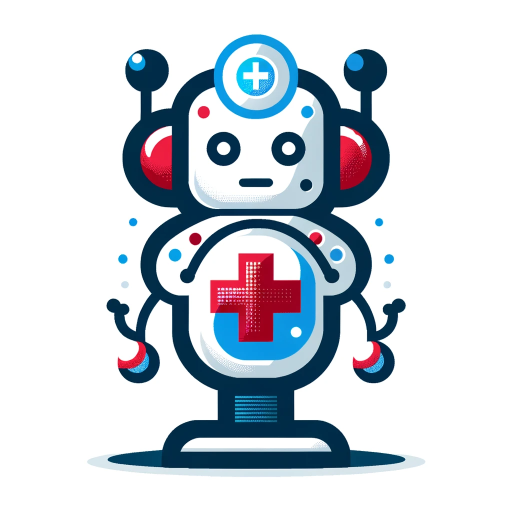Powerautomate-AI-powered workflow automation tool
Automate tasks with AI-powered precision
Does Powerautomate Flows
Hello Sir, what are we building today?
Related Tools

Automation Consultant by Zapier
Discover opportunities to save time with automation at work and get them setup for you.

PowerApps Pro
Accurate Power Platform expert. Trained on 86,453 pages of Power Apps, Power BI, and Power Automate documentation. Also trained on Power Platform Licensing.

Power Automate Helper
Step-by-step Power Automate guide with efficiency tips.

PowerShell
⭐️ 4.5ㆍHighly sophisticated PowerShell scripting copilot, with a focus on efficient, scalable and high-quality production code.

Excel Wizard
Expert Excel assistant for help with formulas, VBA and analysis, with shortcuts, tips, and personality.

Make Automation Pro
Expert en Automatisation Make
20.0 / 5 (200 votes)
Introduction to Power Automate
Power Automate, formerly known as Microsoft Flow, is a cloud-based service within the Microsoft Power Platform suite designed to streamline business processes by automating workflows and tasks. It enables users to create automated workflows between apps and services to synchronize files, get notifications, collect data, and perform repetitive tasks without manual intervention. The design purpose of Power Automate is to democratize automation, making it accessible to users with varying technical skills—from business users to IT professionals—allowing them to build powerful workflows with a user-friendly, no-code/low-code interface. For example, consider a scenario where a sales team needs to be notified whenever a new lead is added to a CRM system. With Power Automate, you can create a workflow that triggers a notification email to the team whenever a new lead is created. Another example is automatically saving email attachments to a specific SharePoint folder, ensuring that important documents are always stored in the correct location without requiring manual action.

Main Functions of Power Automate
Automated Workflows
Example
Triggering a notification email when a new item is added to a SharePoint list.
Scenario
A project manager needs to be alerted whenever a team member uploads a new project document to a SharePoint site. Using Power Automate, an automated workflow can be set up to send an email to the project manager with the document details as soon as it is uploaded, ensuring they are always informed in real time.
Integration Across Platforms
Example
Synchronizing files between OneDrive and Google Drive.
Scenario
A company using both Microsoft 365 and Google Workspace for different departments needs to ensure that critical files are available across both platforms. Power Automate can create a flow that automatically copies files uploaded to OneDrive into a corresponding Google Drive folder, maintaining consistency and accessibility across platforms.
Approval Workflows
Example
Automating the approval process for a purchase order.
Scenario
In a procurement process, once a purchase order is created in an internal system, it requires approval from a manager. Power Automate can route the purchase order to the appropriate manager, send notifications to prompt approval, and update the status of the order once the approval is granted, all automatically. This reduces delays and ensures that the process is smooth and traceable.
Ideal Users of Power Automate
Business Users
Business users, such as project managers, HR professionals, and sales teams, are ideal users of Power Automate. These users often need to automate routine tasks that involve multiple applications and services. Power Automate allows them to set up workflows without needing to write code, enabling them to improve efficiency and productivity in their daily operations.
IT Professionals and Developers
IT professionals and developers can leverage Power Automate to automate complex workflows, integrate systems, and enhance business processes across the organization. They can also build more advanced, custom solutions by incorporating APIs, custom connectors, and scripts into their workflows, making Power Automate a versatile tool for both simple and complex automation needs.

How to Use Powerautomate
Step 1
Visit aichatonline.org for a free trial without login, also no need for ChatGPT Plus.
Step 2
Identify your specific automation needs and the type of workflows you want to automate, such as email notifications, data collection, or task management.
Step 3
Select from pre-built templates or create a custom workflow using Power Automate’s drag-and-drop interface. Ensure all necessary connectors and actions are in place.
Step 4
Test your workflow to ensure it runs smoothly. Use the testing environment provided by Power Automate to simulate real scenarios and troubleshoot any issues.
Step 5
Deploy your automated workflow and monitor its performance. Make adjustments as needed, using Power Automate’s analytics and tracking tools to optimize the process.
Try other advanced and practical GPTs
Medical Assistant
AI-Powered Health Guidance at Your Fingertips

Data Analyst
AI-powered insights, right at your fingertips.

The Cybersecurity Professor 🪄 🧙🏽♂️✨
Empowering cybersecurity learning with AI.

Tressless: Reverse Your Hair Loss
AI-powered insights to reverse hair loss

DarkGPT
Unlock In-Depth AI Insights

8K Image Upscaler Pro
AI-Powered Image Upscaling for 8K Resolution

Ask R Discovery
AI-powered research answers at your fingertips.

SaaS Idea Generator 🤖⚡
AI-powered SaaS ideas tailored to you

Astrology Fortune Teller
AI-powered astrological guidance for life

Rust Assistant
AI-powered assistant for seamless Rust development

PsyMedAssist+
AI-driven insights for psychiatric care
Speak
Master languages with AI-powered Speak.

- Task Automation
- Workflow Optimization
- App Integration
- Data Syncing
- Notification Triggers
Powerautomate Q&A
What is Powerautomate?
Power Automate is a cloud-based service that allows users to create automated workflows between different apps and services, streamlining repetitive tasks and improving productivity.
How secure is Powerautomate for business use?
Power Automate integrates with Microsoft’s security infrastructure, including Azure Active Directory and Data Loss Prevention policies, ensuring that workflows comply with enterprise security standards.
Can I use Powerautomate to automate data collection?
Yes, Power Automate can be used to automate data collection by connecting to various data sources, triggering workflows based on specific conditions, and aggregating the data into reports or databases.
Does Powerautomate support third-party integrations?
Power Automate supports hundreds of third-party integrations, including popular services like Salesforce, Google Drive, Slack, and more, allowing you to create complex workflows across different platforms.
Is there a learning curve for Powerautomate?
While there is a learning curve, Power Automate provides a user-friendly interface with drag-and-drop features, extensive documentation, and templates that make it accessible even for non-developers.